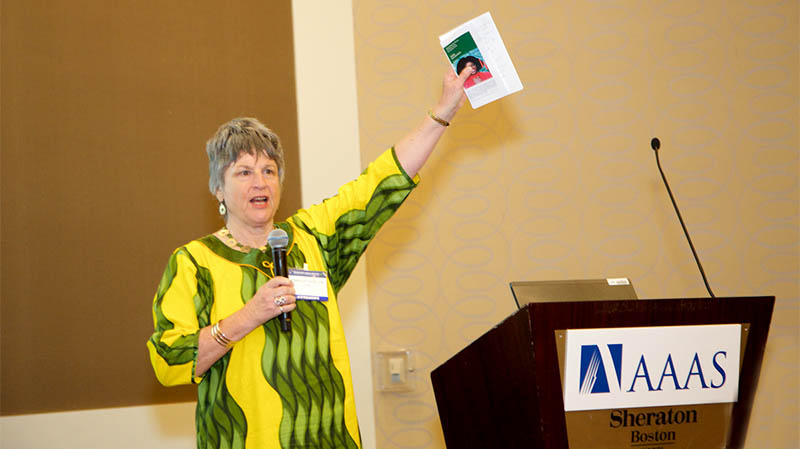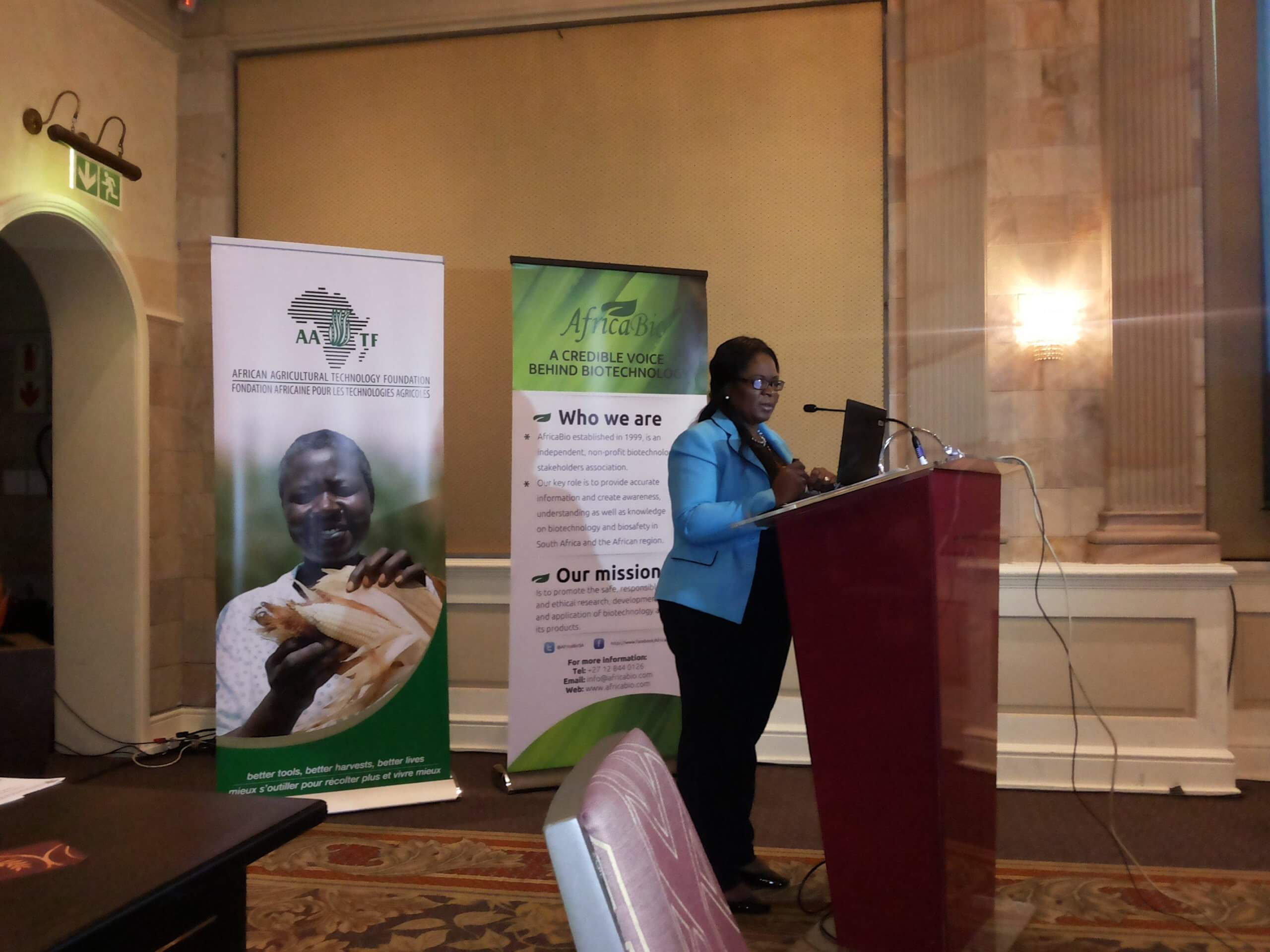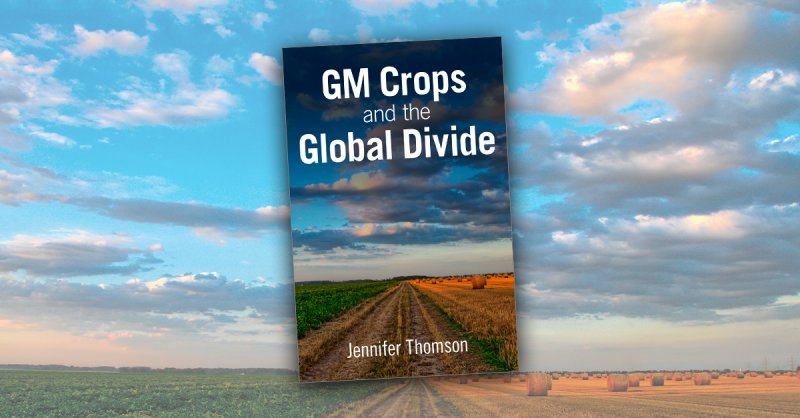Jennifer Thomson’s excellent new book, “GM Crops and the Global Divide” (CSIRO Publishing, 2020), is a highly informed, lucid, and gracious narrative. Able to maintain equanimity in the face of one of the most polemical debates of our time, Thomson, Emeritus Professor of Microbiology at the University of Cape Town, provides a succinct yet detailed overview of the history of genetically modified crops, guiding the reader through the history of molecular genetic engineering, from its beginnings in the 1970s, and concluding with the birth of genome editing.
A veteran in the field, she discusses the science and economics of GM crops from the viewpoint of many of the usual-suspect countries, including the United States, Brazil, India, and China, as well as an assortment of African nations. Thomson also manages to cover fairly and clearly many controversial topics such as Seralini’s infamous fraudulent rat study, the continuing glyphosate saga, conundrums regarding food labelling, the myth of GM-caused farmer suicides in India, and misinformation in general, in a way that is informative but not inflammatory.
What distinguishes “GM Crops and the Global Divide” from other books on the topic is Thomson’s South African perspective, which is both refreshing and unique. Thomson has been a direct participant in the history of African biotechnology from its inception. In her chapter, ‘Countries that got it right, and why,’ she explains how genetically engineered crops came so easily to South Africa: From as early as 1978, the Council for Scientific and Industrial Research (CSIR) created the South African Committee for Genetic Experimentation (SAGENE) which followed guidelines that were earlier promulgated by the United States’ National Institutes of Health.
As such, the Council required that universities implement adequate laboratory safety standards before research funding would be awarded to academic faculty, and offered training programs to provide academics with the expertise necessary. Eventually, these efforts paid off: By 1990, an assortment of biotech companies began to apply for approval to conduct field trials and the subsequent field testing of a variety of GM crops, ranging from maize and cotton to eucalyptus and apple. SAGENE drew up procedures, and by the time the South African government had obliged with the development of a GMO Act in 1999, the task of regulating biotech crops was already routine. It was straightforward, then, for South Africa to mobilize a strategy that could bring innovations such as GM crops forward to commercialization.

We need to interject here some relevant commentary about what, in this context, constitutes “getting it right.” Everything is relative, and the recombinant DNA guidelines from the U.S. National Institutes of Health alluded to above were far from “right.” Because they were excessively, unnecessarily risk-averse, the guidance they provided was misguided. Those technique-based guidelines, which were focused on the use of a single technique–recombinant DNA modification–instead of on the actual risks of experiments, have slowed plant genetic engineering research and development ever since.
By assuming (incorrectly) from the beginning that recombinant DNA-modified organisms—which have come to be commonly known as “genetically modified organisms” or GMOs—were a high-risk category that needed to have sui generis regulation, the NIH guidelines created excessive or even redundant oversight for many products that were already sufficiently regulated if they posed unreasonable risk.
Worst of all, they reinforced the misconception that recombinant, or “genetically modified,” organisms are a meaningful “category.” Although the NIH gradually pared back the scope and stringency of its guidelines, stultifying, process-based, technique-focused approaches to regulation of this pseudo-category (defined in different ways, using various terms) have remained intact there and at other U.S. federal agencies, as well as in numerous foreign countries. Many countries have even banned the cultivation of genetically engineered plants entirely. Such excessive government regulation perpetuates the misapprehension on the part of many non-experts that products or activities that are stringently regulated must, ipso facto, be high-risk.
Even when genetically engineered crop plants move successfully through regulatory review, R&D is far slower and more expensive than necessary. In certain countries, such as the U.S., Canada, and South Africa, at least products do progress, albeit slowly. In conjunction with the movement of products through South Africa’s R&D pipeline was the creation of AfricaBio, a not-for-profit organization that promotes the safe, ethical and responsible use of the products of biotechnology. AfricaBio acts as a science communicator to smallholder and commercial farmers of South Africa regarding the use and management of GM crops.

As a result of entities such as SAGENE and AfricaBio, the South African public is currently far more positively disposed than Europeans toward GM crop safety, possibly because they have already been eating GM maize for over 20 years, without any harmful effects.
The story of South Africa and GM crops continues in Thomson’s next chapter, ‘To label or not to label–that is the question.’ The contradictions of labelling GM foods takes an interesting twist when considering that 80-90% of South Africa’s maize is GM, and it doesn’t make sense to make consumers pay for labeling costs, which could raise the price of maize by around 10%.
Thomson goes on to describe ‘The West versus Africa’ in the next chapter. The sad story of detrimental impacts of foreign influence on Africa is not new. Thomson notes that the only African countries that are commercializing GM crops besides South Africa are Sudan, Nigeria, and Eswatini (Swaziland). She states: “Much of Africa’s agricultural produce is destined for Europe,” and reminds us, “Therefore, Europe could influence organizations to adapt EU-style restrictions on GM crops and the EU has been waging war on GMO foods for decades.”
At the same time, Europe’s stringent import standards keep food products produced by smallholder African farmers out of their supply chain, instead favoring products from larger commercial farms. She points out that Europe tries to protect its farmers from competition with their American counterparts (who farm GM crops prolifically), even to the point of preventing African nations from accepting food aid from the United States, as it might be “contaminated with GM.” Yet, paradoxically, the EU itself is heavily dependent on imported GM crops for animal feed. This is cynical neo-colonialism at its worst. Europe’s wholly unwarranted, decades-old, lose-lose campaign against genetic engineering was brought to mind by this lede in a Wall Street Journal article about the EU’s COVID-19 vaccine distribution:
It’s hard to think of a recent fiasco that can match the European Union’s Covid vaccine rollout. Protectionism, mercantilism, bureaucratic ineptitude, lack of political accountability, crippling safety-ism—it’s all here. The Keystone Kops in Brussels and European capitals would be funny if the consequences weren’t so serious.
The EU’s adamant rejection of GM crops is another, ongoing policy fiasco.
Another issue on which Thomson provides clarity is the claim that if African farmers have access to GM crops provided by multinational corporations, they will cultivate them in preference to and replace their indigenous crops, leading to control of the African seed sector by foreign corporate interests. The fear that African farmers will become reliant on corporate seeds is one of the arguments for “agroecology,” a vaguely defined concept that amounts to reliance on primitive, low-yielding agricultural techniques.
Thomson describes how as a child, science communicator Margaret Karembu (Director for the Director of ISAAA-AfriCenter (International Service for the Acquisition of Agri-biotech Applications – Africa region) recalls how her family struggled to put food on the table. “She now realizes that her family was practicing subsistence farming, which European greens call agro-ecology family farming, in which families hardly produce enough food to last until the next harvest.” This results in African farmers being locked into a perpetual cycle of food insecurity and poverty.
Farmers should be free to choose whichever seeds and other farming methods are best suited to their circumstances. In any case, fear of new crop varieties is unwarranted. Crops with new, improved traits were provided to African farmers long before GM crops were available, and many of the so-called local varieties are themselves the result of previous scientific research and development performed in their own countries. In Uganda, for example, more than half of the new maize varieties are the products of Ugandan research, not of foreign multinationals. In addition to this, the fear of permitting African farmers to use modern technologies is generally a moot one, as they cannot afford tractors, irrigation systems or fertilizers.
One thing they are far more likely to afford, however, is seed for better-performing GM crops – as illustrated by the fact that more farmers in developing countries plant GM seeds than in industrialized countries. Since 1995, when GM crops were first commercially grown, more than 70 countries have adopted them, either by planting or importing them. In 2019, more than 17 million farmers, 95% of whom come from developing countries, planted 190.4 million hectares of GM crops. These numbers could, and should, be much higher, but shortfalls in the adoption of useful technology are causing a major impact on agricultural productivity and preventing the widespread cultivation of potentially life-saving, income-boosting crops.
Thomson offers many examples of dysfunctional government approaches to GM crops, such as in Kenya, Uganda and Tanzania, no doubt egged on by anti-GMO sentiment. The culprits include the Kenyan Ministry of Public Health, the anti-GMO entity Inf’GMO of France in the case of Tanzania, or in Uganda, the President of the country himself.
In summary, in “GM Crops and the Global Divide,” Professor Jennifer Thomson capably traces the historical significance and current impacts of European influences on colonial governance, aid, trade, and educational involvement on African leaders and their people. It’s a revealing and sobering read.
Kathleen Hefferon, Ph.D., teaches microbiology at Cornell University. Find Kathleen on Twitter @KHefferon
Henry Miller, a physician and molecular biologist, is a senior fellow at the Pacific Research Institute. He was a Research Associate at the NIH and the founding director of the U.S. FDA’s Office of Biotechnology. Find Henry on Twitter @henryimiller
A version of this article was originally posted at European Scientist and has been reposted here with permission. European Scientist can be found on Twitter @EuropeScientist































